On 24 August 1869 church services were disrupted by six lads between the age of twelve and fifteen years who threw rotten eggs and stones at worshippers and into the church. John Argus, who was attending the meeting was struck by a rotten egg.
|
The Bible Christian Ebenezer Chapel, Sandlands Road (now Hendy Main Road), Mount Moriac was opened with a service on Christmas Day 1856. This was followed by a tea provided by the ladies at 5pm. The cost of the 24 x 18 feet building was £190 of which £120 had already been raised. The tea raised an extra £30. It was built on the west side of Hendy Main Road, north of Colac Road.
On 24 August 1869 church services were disrupted by six lads between the age of twelve and fifteen years who threw rotten eggs and stones at worshippers and into the church. John Argus, who was attending the meeting was struck by a rotten egg.
0 Comments
St Cuthbert's Church of England, designed by Laird and Buchan and built in 1911 by Mr Kelly, was situated between the two cypresses on the Marshall Reserve in Marshalltown Road. It was built beside an old church which had originally been used also as a school. The old church was replaced by a Sunday School in 1922. The final service was held in 1982 at Marshall and finished at the new site in Grovedale. The chapel building was purchased by the City of South Barwon and operated as the Marshall Community Centre from about 1983-1987. After this, the old building was moved to Cobbin Farm in Grove Road, Grovedale where it is often used for weddings. A grand meadow fete was held in 1899 to procure funds to renovate the interior of the old church and to build a chancel if possible. By all reports in the Geelong Advertiser the fete was a huge success. A profit of £83 6s 5d was made. In appreciation of the hard work of the ladies, the church committee invited them to a picnic. By 1901 the advertisement for another meadow fete to be held was in aid of the new church building fund. For a number of years, before and after 1911, fetes and tea meetings were held to raise further funds. In 1913 it was a wisteria fete where the interior was decorated with wisteria which gave a dainty and pleasing effect. The new church was dedicated by the Archbishop of Melbourne on 10 June 1911. Councillors and officers of the Shire of South Barwon were invited to attend. In 1916, after the debt on the church had been paid, the proceeds of the fete went towards gas lighting in the church. In 1917 two honour rolls were unveiled. Parishioners, relatives and friends of those whose names were on the boards attended the church for the service on Sunday evening 15 March. There was a parade of the Young Men's Club, whose roll contained 18 names of members who had enlisted.
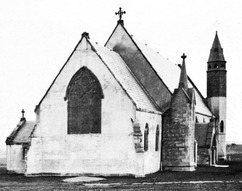 The church before rebuilding The church before rebuilding In 1952 working bees were held to clear away the stone from the original church that had been erected in 1860. As the old church was unsafe after the recent storm damage it was decided to rebuild the new church on the foundations of the old church. Built of Mount Gambier limestone, the cost was £5000. The old steeple was incorporated into the new design. It was hoped to find records of the laying of the foundation-stone (31 October 1858) in a bottle inserted into one of the stones, but this did not happen. The new church was not as large as the old one which had beautifully carved doors and windows. When it was erected in the early 1860s there was also a presbytery and school. It had been built to serve a much larger population. The Mount Moriac country was once thickly populated. Evidence of this could be seen from the number of deserted and decaying houses fifty years ago. The blocks were relatively small and as families grew the settlers found they could not make ends meet. These farmers often shifted to remote areas where blocks were larger such as in the Wimmera. A large proportion of the earliest settlers in Mount Moriac were Catholic and as this was the only Catholic church between Geelong and Colac parishoners flocked to it. It was reported that the stone used in the construction of the first church was faulty, and on many occasions the church had to be repaired. In 1869 the walls, erected at a cost of £4,500, were cracking and needed a large amount of money to make them secure. This damage was caused by the loose manner in which the foundation was put in. Alterations were again carried out in 1887. Damage to the church in that year included broken slates, and the destruction of the large stained glass western window which was shattered by a furious hailstorm. In 1929 leadlight windows were broken by someone throwing stones. In February 2017 more than 200 people watched at the auction when the property was sold for $605,000 to a local buyer. The former Bible Christian Siloam Chapel built in 1858 in Considines Road Modewarre, is the earliest known Bible Christian Chapel in Victoria, and one of only three known surviving former Bible Christian Chapels in the state. The Bible Christian Church was brought to South Australia through emigrant Cornish miners, and soon spread to Victoria. The Modewarre church became a centre for temperance lectures in the district with speakers from the Geelong Band of Hope. 1 January 1902 saw the re union of the five separate and competing sections of the Methodist Church throughout the Commonwealth of Australia. The parent body, the Wesleyan Methodists were joined with the Primitive Methodists, United Methodist Free Churches, Bible Christians and the New Connexion to form "The Methodist Church of Australasia".
The Band of Hope was founded in United Kingdom in 1847 and established in Australia by 1860 during a time when excessive drinking among adults was common, adding to the problems of poor living conditions and health, and maltreatment of children and child mortality. Alcohol was freely available to children. The organisation had a policy of education particularly with the young. Many Bands of Hope were associated with Churches and Sunday Schools. The Band of Hope targeted children of parents who wanted their children to be educated and have a secure future. It was seen by many adults as a way to develop self-reliant working men who could use temperance as a route to self improvement. To encourage children to join and remain members, groups held annual outings, tea meetings, offered music lessons, established orchestras and produced newspapers whose content promoted temperance. Meetings began with a temperance hymn, prayers and the chairman's speech, this was followed by music, recitations, readings and pledge signing. Queen Victoria became patron in 1897, the Jubilee year, and several celebrations were held. In some ways it could be said that the success of the Band of Hope caused its own decline. As alcohol misuse became less of a problem and as legislation improved there seemed to be less need to work so fervently in this area. A book presented to William Danger by his Bible Christian Sabbath School in 1888 — contributed by Leanne Fagg
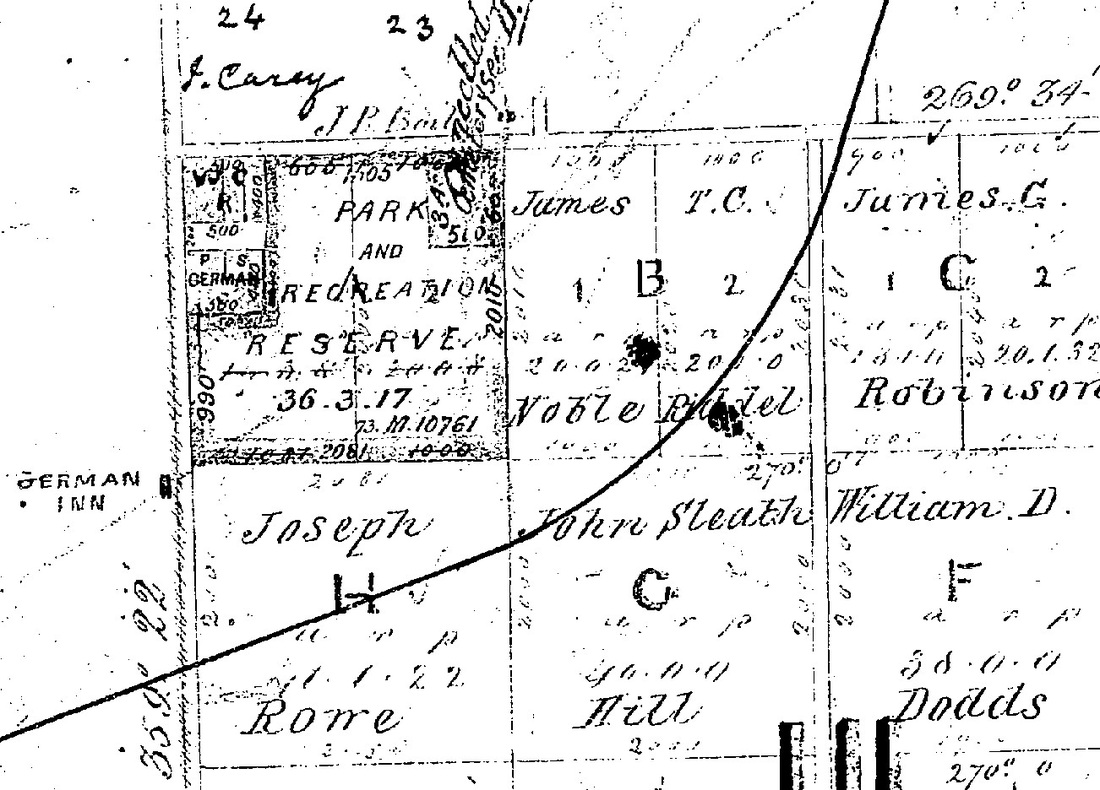 An early map dated 1855 shows a park and reserve of 36 acres. In the north east corner of the reserve a block is reserved for a cemetery. In April 1863 the South Barwon Council wrote to the president of the Board of Land and Works to oppose the establishment of a cemetery in this location. The area had a Lutheran cemetery and most of the residents were of this faith.
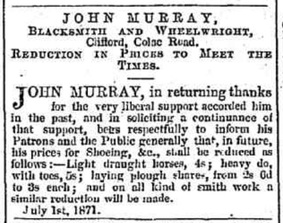 Clifford had a blacksmith, hotel, church/school, post office and store. It took its name from Lawrence Trewin’s Clifford farm on the corner of Colac, Devon and Cape Otway Roads. He moved to Echuca in 1875. A store was run by Herbert Cotton, who also ran a licensed store and hotel in Russell Street, Chilwell. He married Elizabeth Trewin in 1862 and had 9 talented children who entertained with singing and dancing and playing two violins, a cornet, a piccolo and a piano. Stephen Sleator was the next licensee. He also ran the Argyle hotel on the corner of Aberdeen and Coronation Streets. He also ran the store at Clifford. He moved to the Wimmera in 1876. Trewin then called tenders for the lease of the store and hotel for three to five years. James Gorell, who owned a business at 517 Moorabool Street, South Geelong, was the successful tenderer. The hotel was destroyed by fire in May 1877. Although both Trewin and Gorell were insured, the hotel did not re open, probably because of the declining population in this area. Subsequent generations of the Gorell family have been successful businessmen in Geelong. The post office, which was originally named Amblerton, opened on 17 September 1868, was renamed Clifford on 1 October 1868 and closed on 28 May 1877. A blacksmith, John Murray, operated in the early 1870s. His advertisements appeared in the Geelong Advertiser from 1871-74. A Church of England school was established on 15 August, 1853, with John A Boyd as its first teacher and an attendance of 21. Its name was Colac Road but was changed in 1856 to Duneed. It became Common School No 187 in 1869 when it had 42 pupils. The name was changed again in 1871 to Clifford. It closed on 18 August, 1875. Arthur Streeton's father, Charles, was school teacher at this school from 1 August 1865 to 13 June 1869. Arthur was born at the school house. 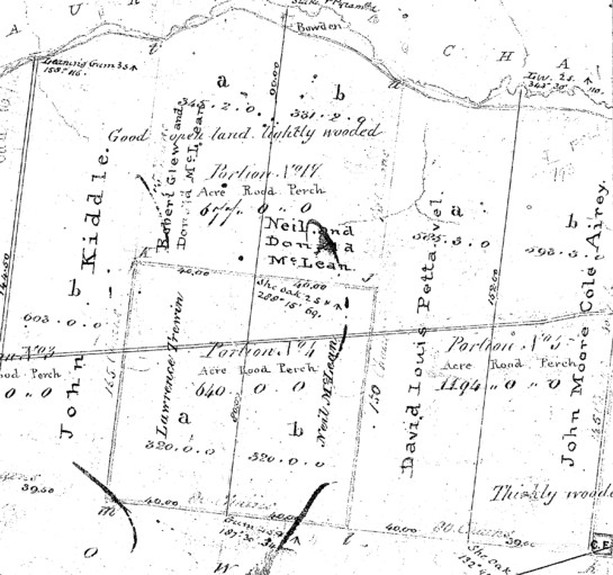 These blocks along the Princes Highway were first sold in 1840 These blocks along the Princes Highway were first sold in 1840 The many motorists who drive towards Mount Moriac on the Princes Highway would probably not guess that a settlement near the corner of Cape Otway Road and Devon Roads was a very busy little centre in the nineteenth century. The long climb up the hill from Waurn Ponds made a natural spot for weary travellers and their horses to take a rest. Numerous wagons and vehicles obstructing the road outside the Clifford Hotel drew the attention of the Moriac police who were eager to get rid of "this nuisance". Further down Cape Otway Road a Wesleyan church at Wellington was active for about fifty years. To the east a number of buildings in Pettavel Road bore the name Pettavel including a railway station, which was a great asset to the district, a school and a church. The church had been used as a hayshed before an arsonist set it alight on 19th December 1972. The fire could not be extinguished without dismantling the building. This took all day. The police kept watch and late in the day the culprit turned up and was apprehended.
On 15 January 1944 Mount Duneed suffered devastating losses when a fire swept through the area.
The remains above are the south wall of the church looking north. This bell which once hung from a tall wooden frame at the rear of the church was rung each Sunday morning. It now stands in front of the Belmont Uniting Church in Thomson Street Belmont, Victoria.
|
SponsorsLinksThe Bluestone Cottage at Marshall
Together They Served Torquay Museum Without Walls Barwon Blog Geelong and District Database Geelong Cemetery Index Australian War Memorial Trove Public Records Surf Coast Early Schools Victorian Places Barwon Heads History |
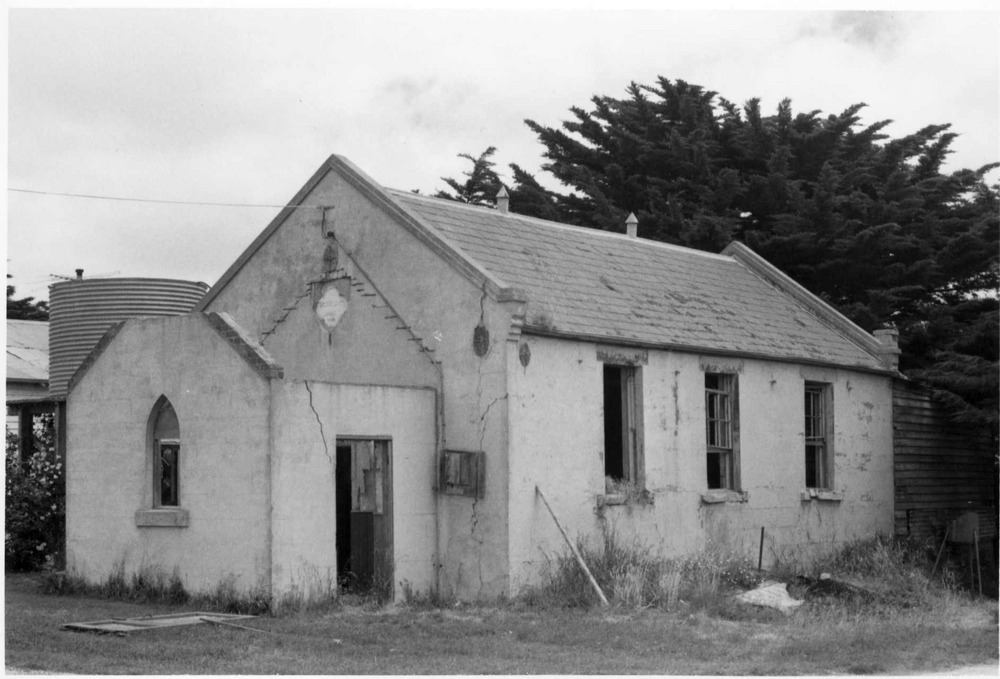
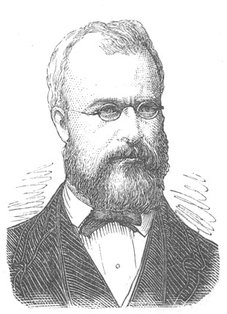
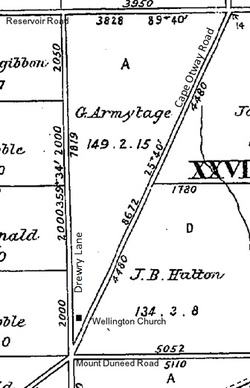
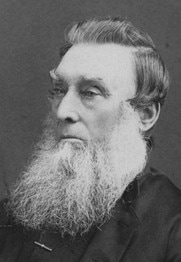
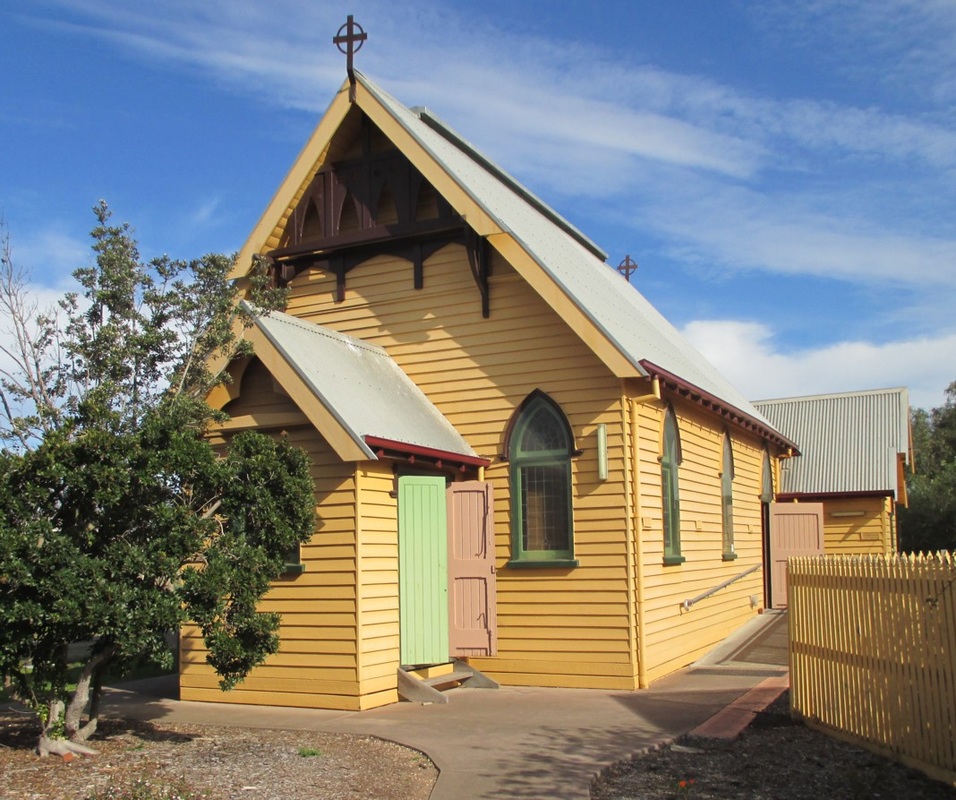
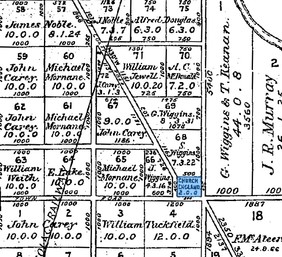
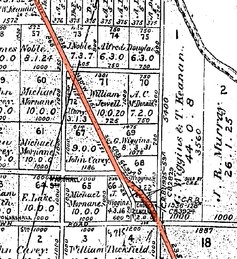
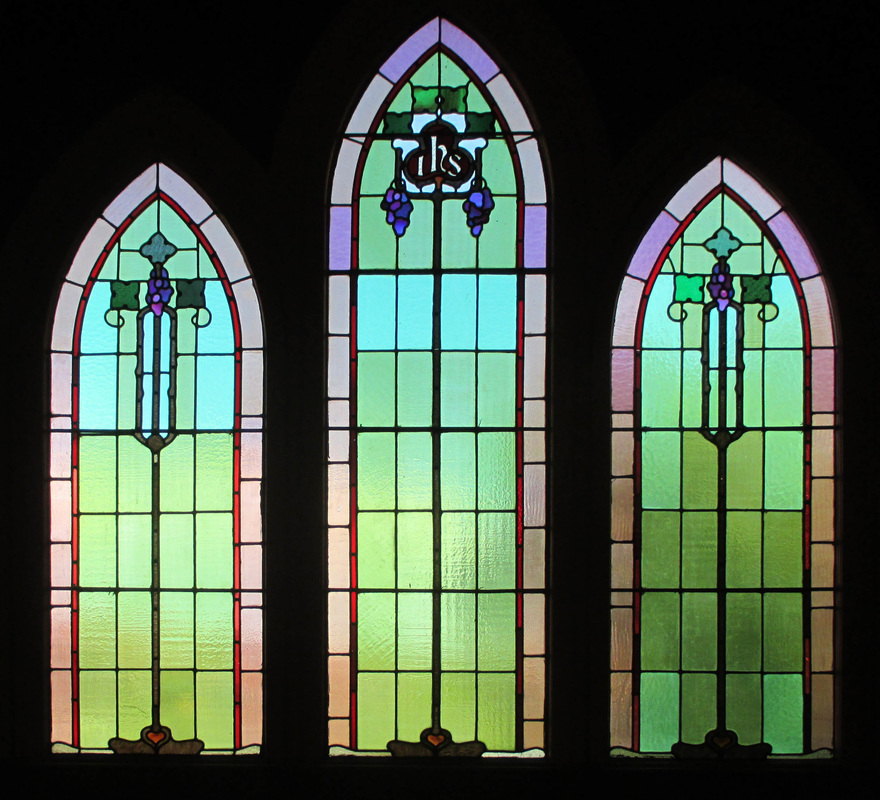
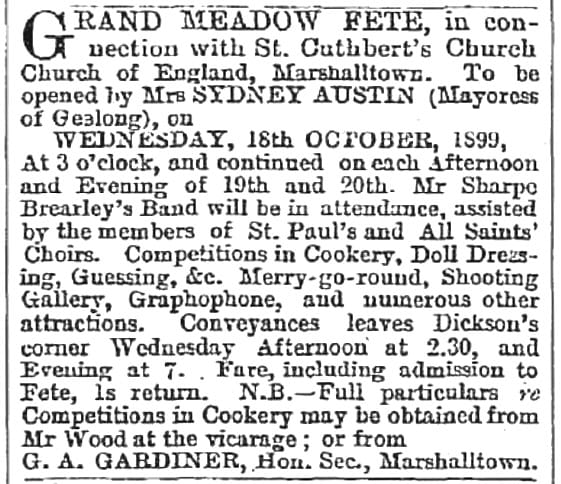
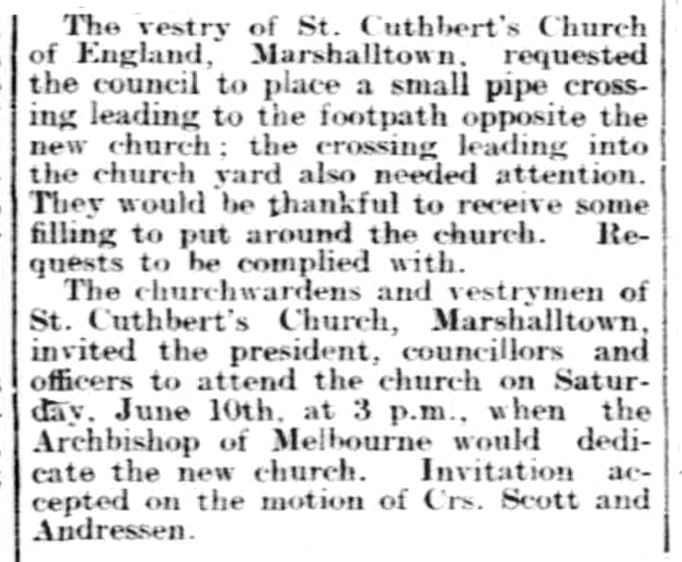
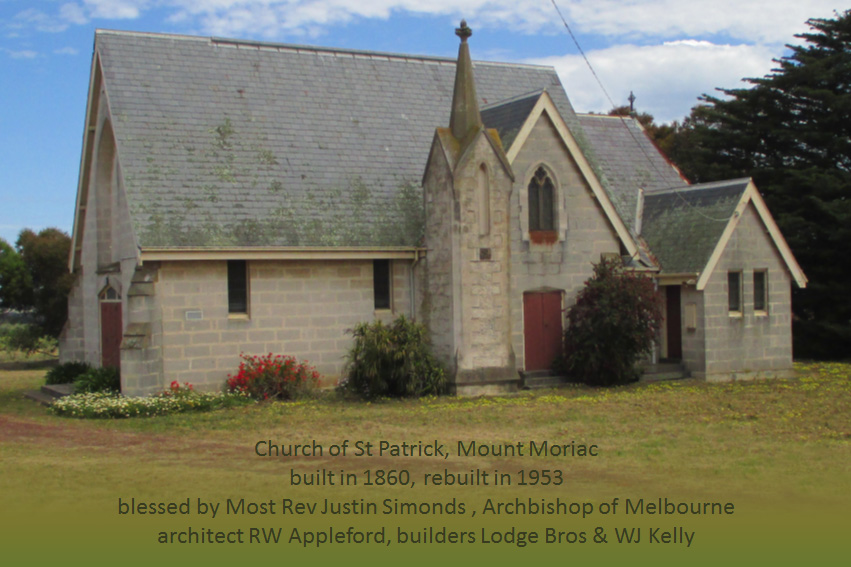
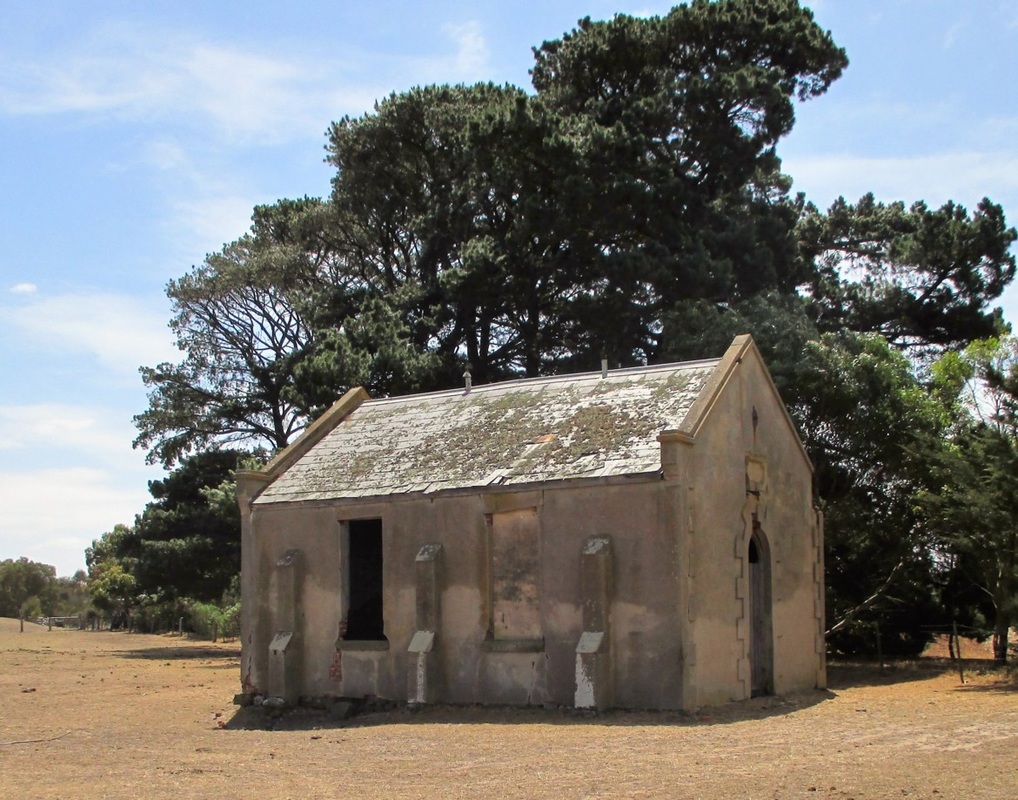
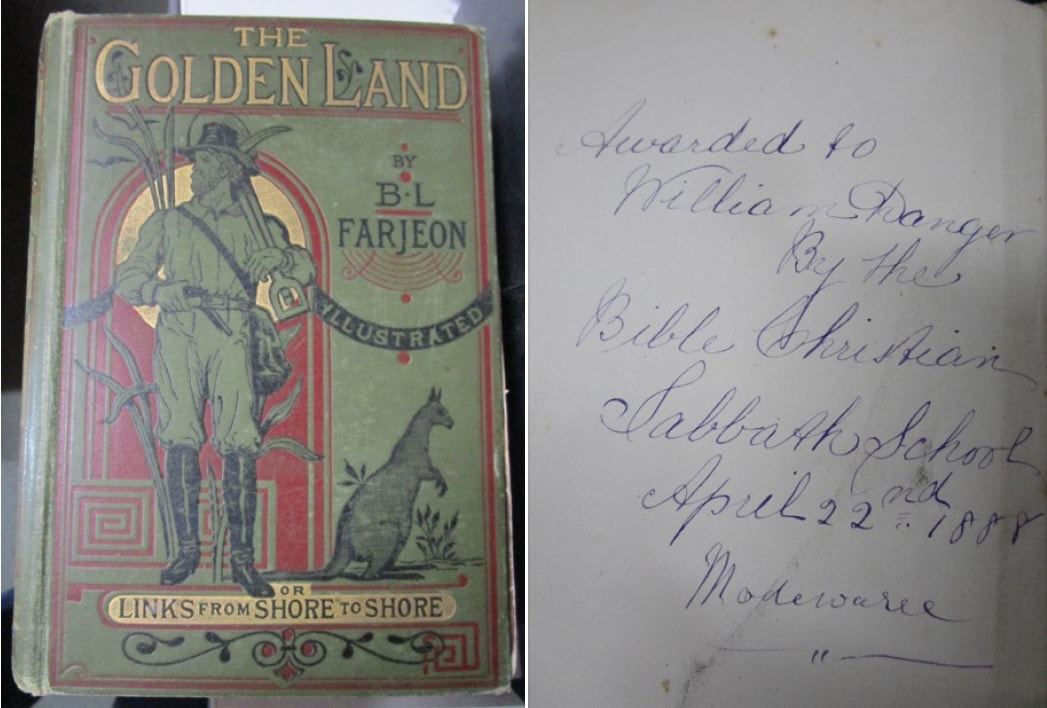
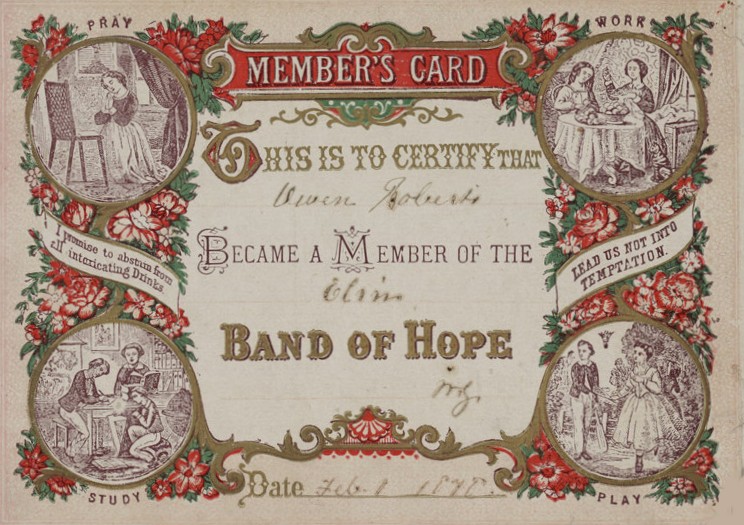
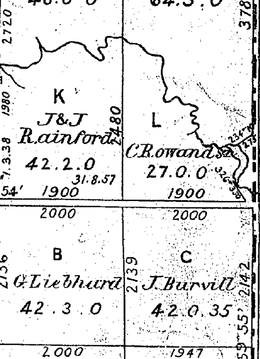
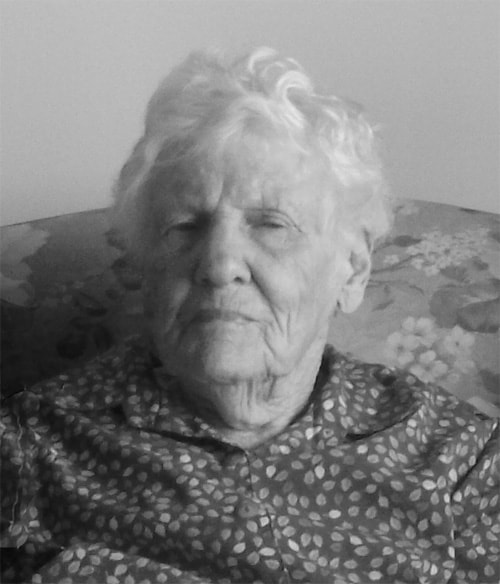
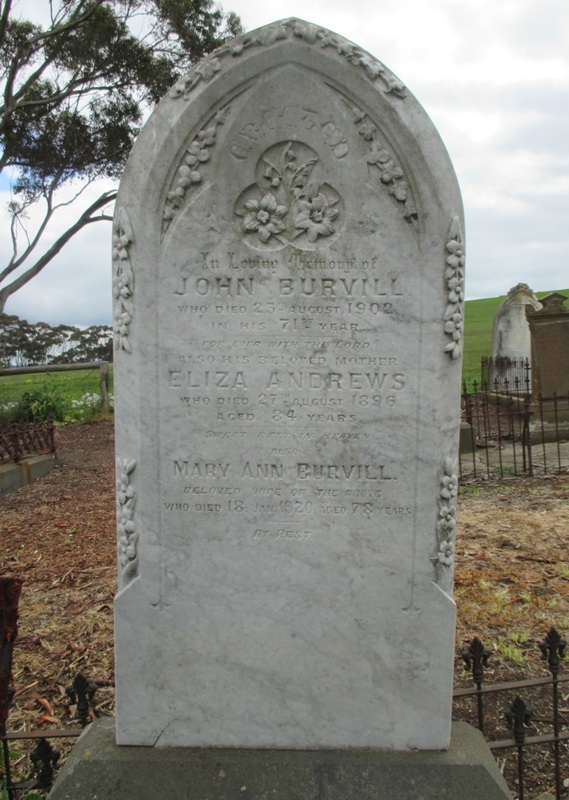
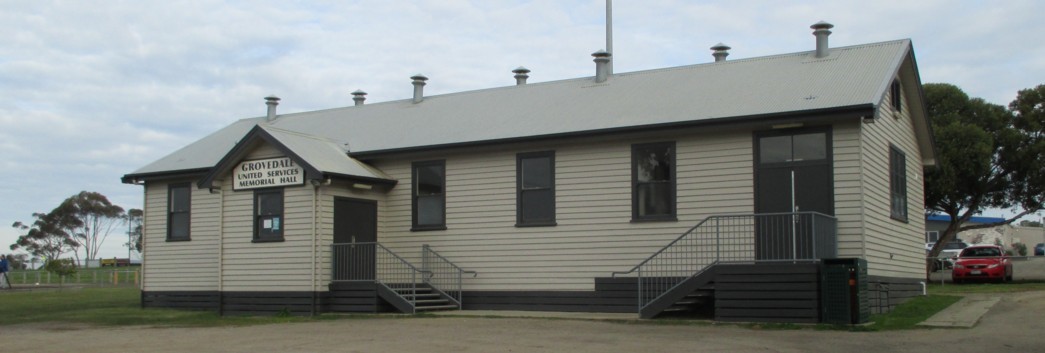
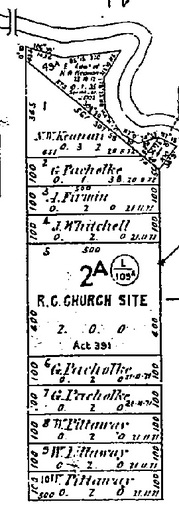
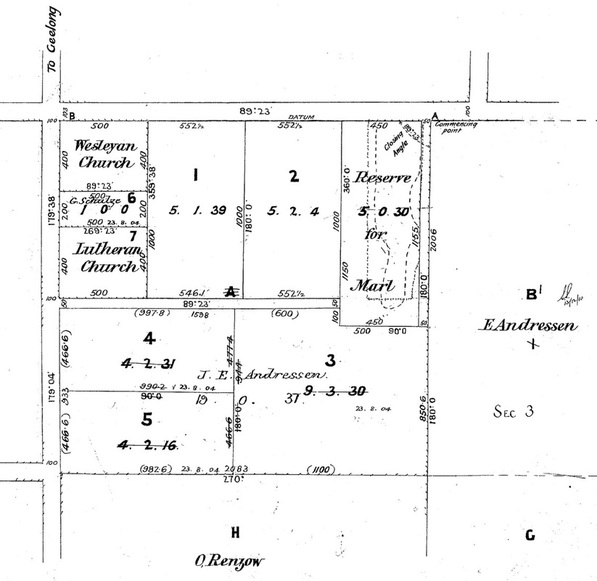
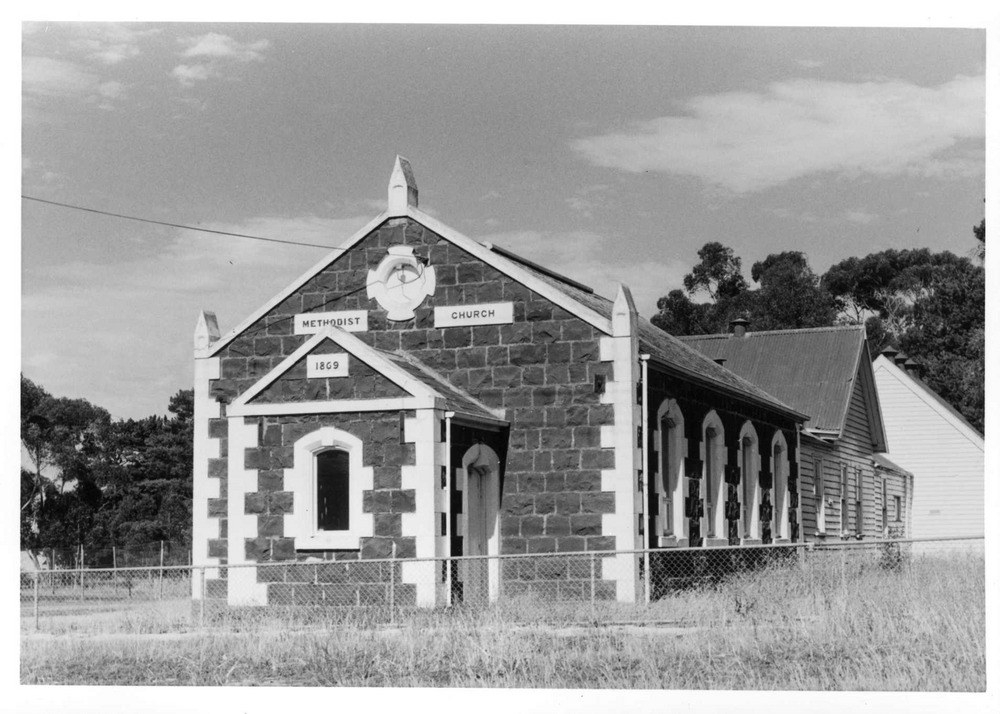
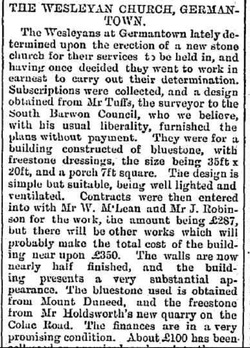
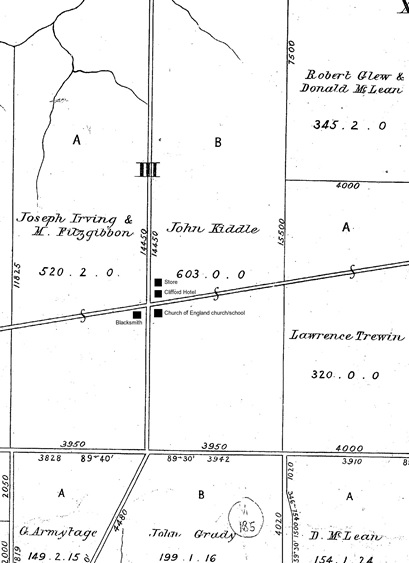
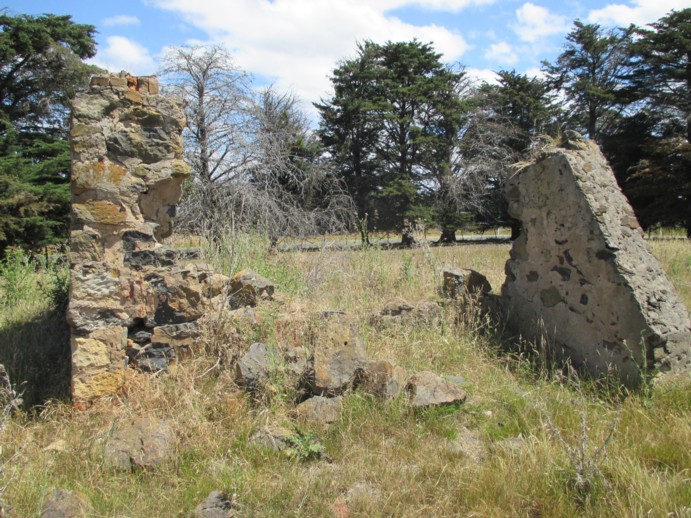
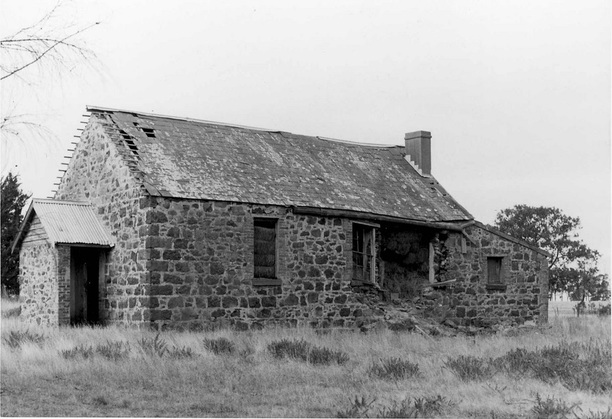
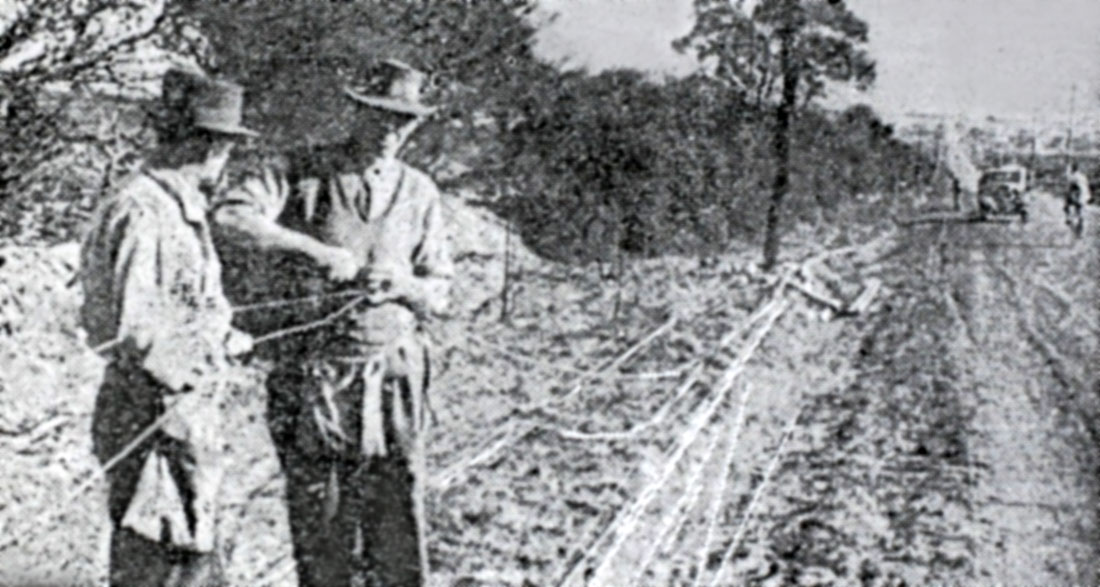
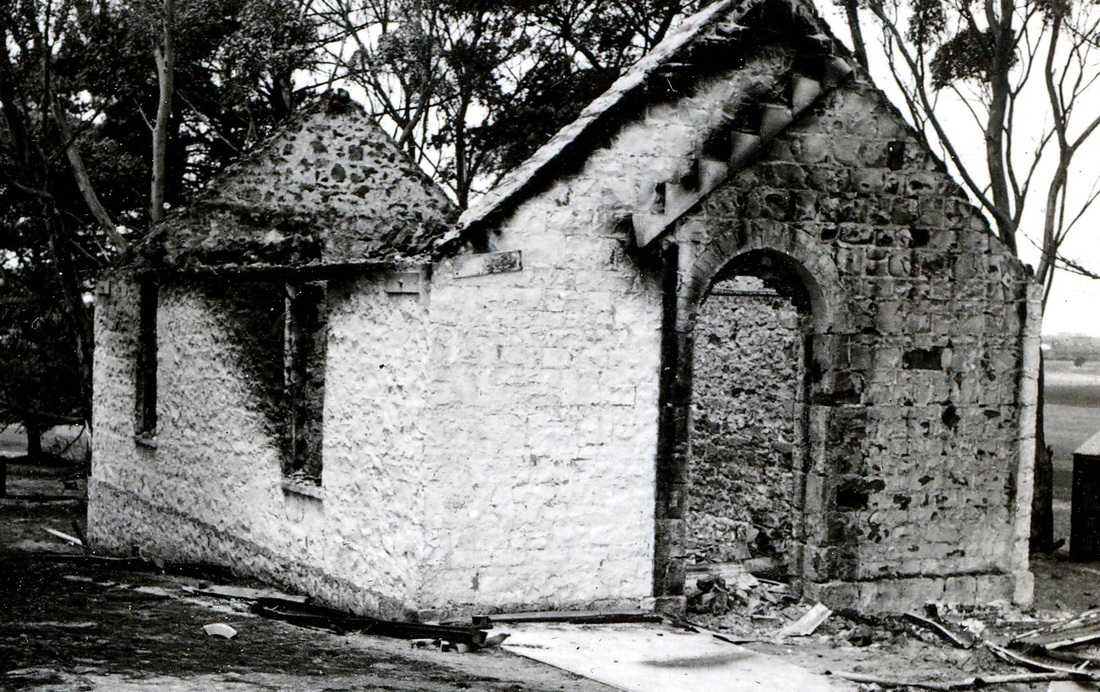
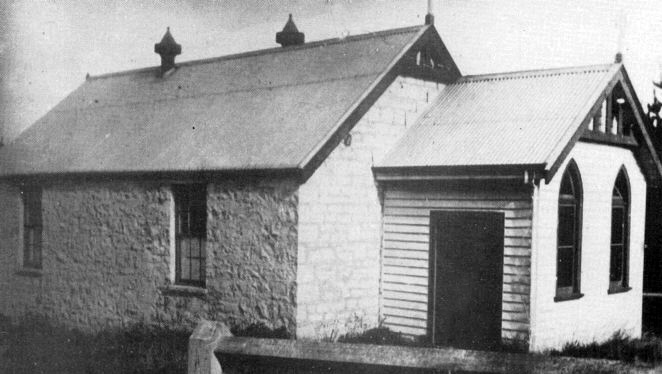
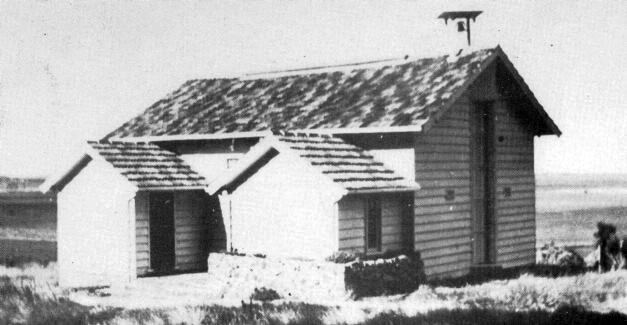
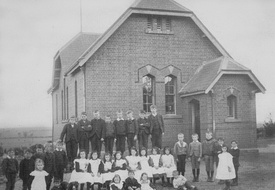
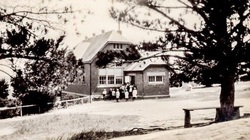
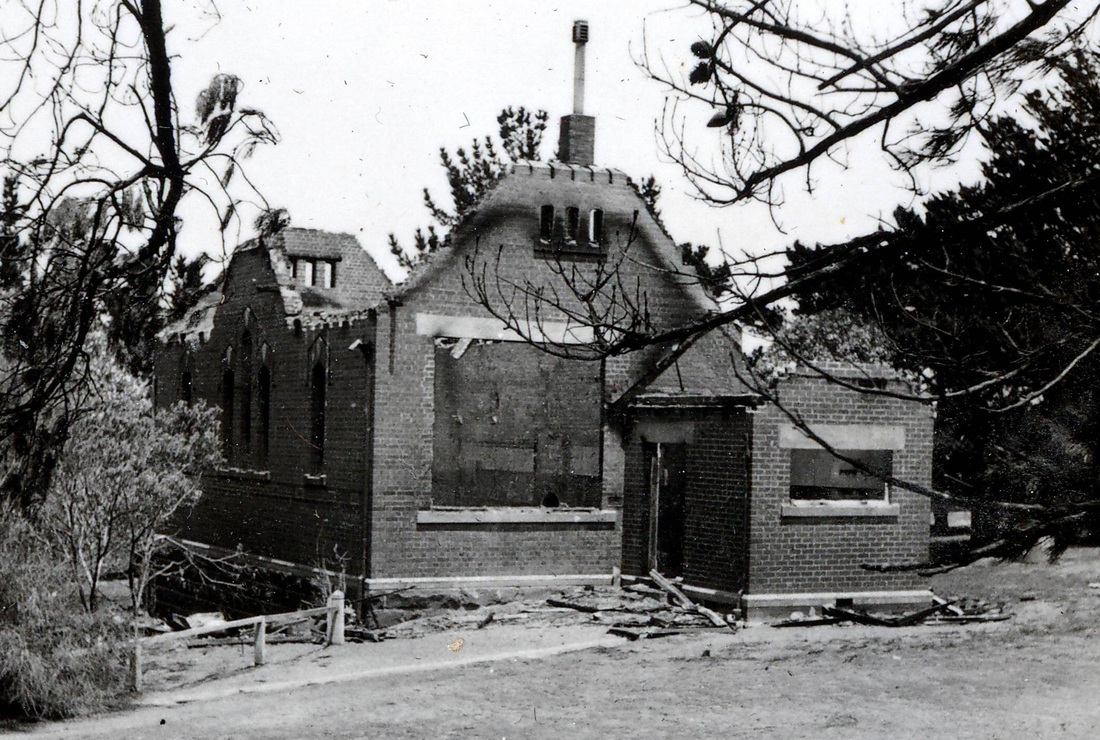
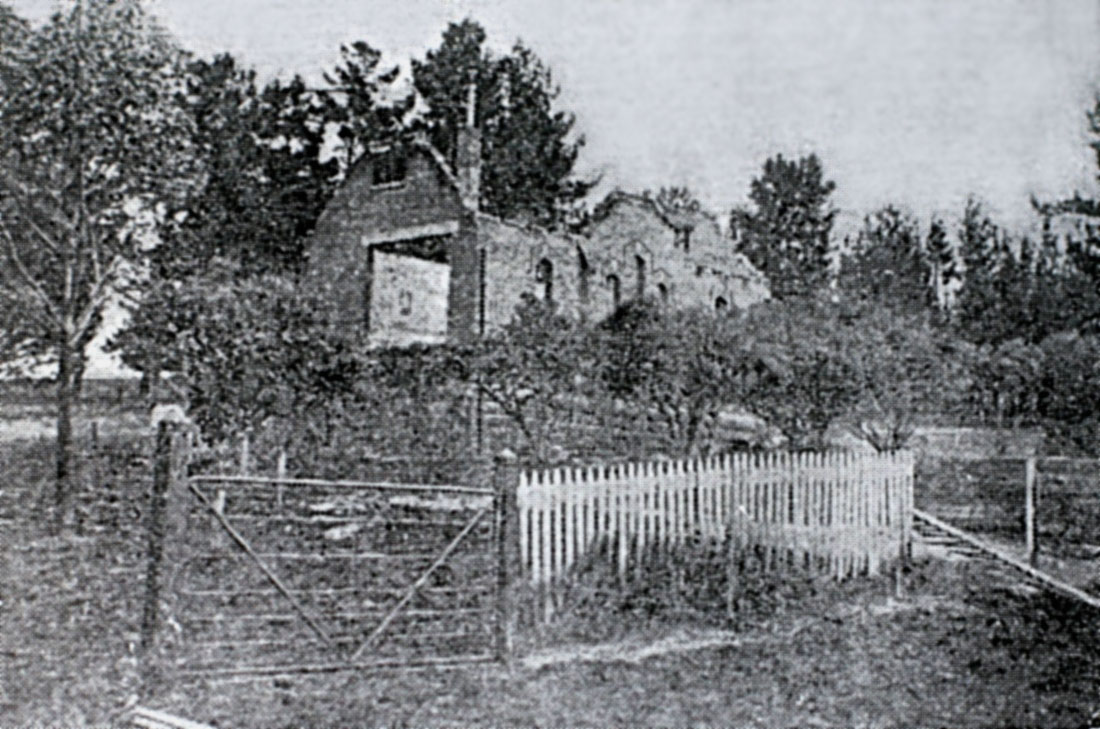
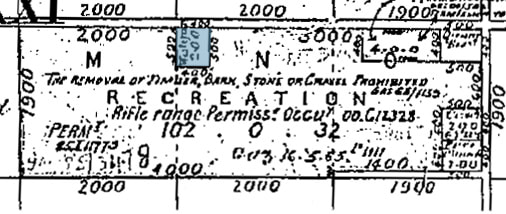

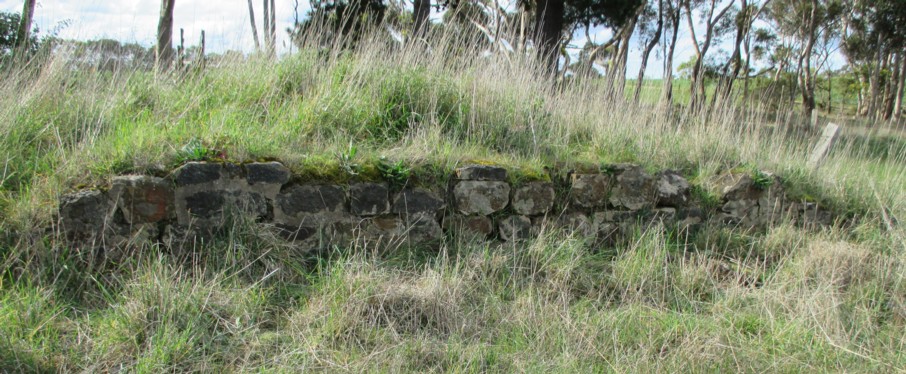
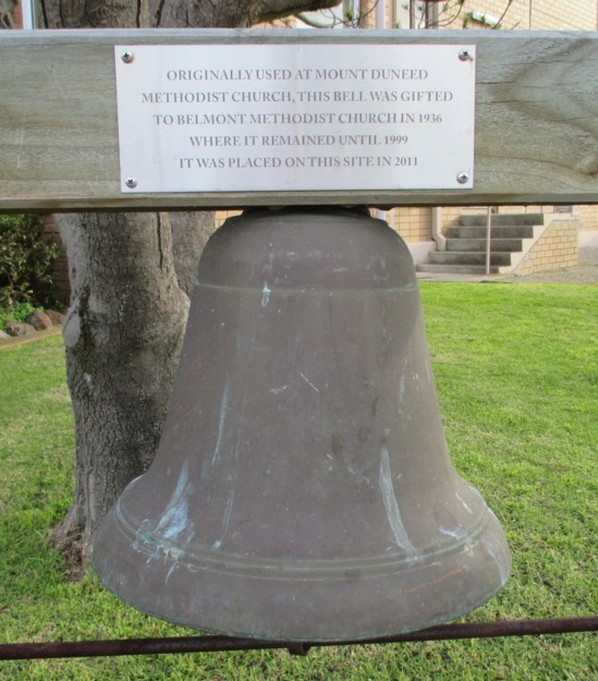


 RSS Feed
RSS Feed
